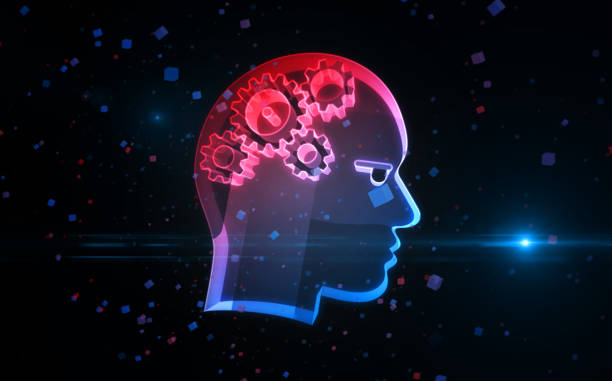What is On-Page SEO and Why Does It Matter?
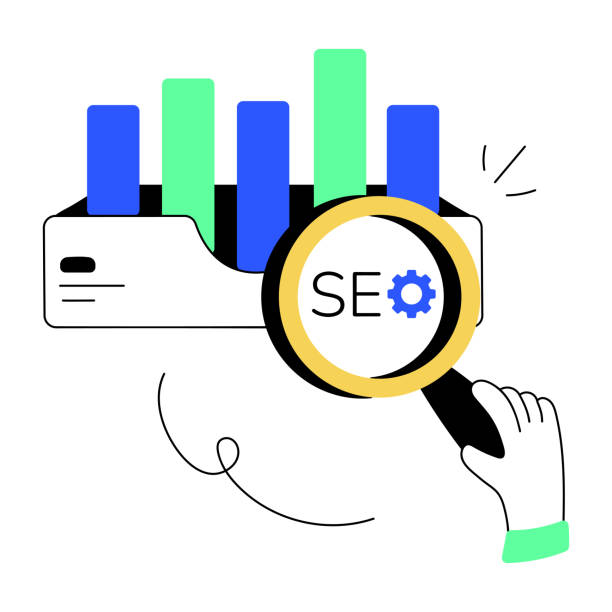
On-Page SEO is a set of techniques and actions performed within your website to improve its ranking in Google search results and other search engines.
These actions include optimizing content, site structure, title tags, meta descriptions, and other internal site elements.
On-Page SEO is important because it helps search engines better understand your site’s content and show it to relevant users.
By optimizing On-Page SEO, you can attract more organic (free) traffic to your site and, consequently, increase your sales and revenue.
In short, On-Page SEO is the foundation of any successful SEO strategy.
Without On-Page SEO optimization, your efforts for Off-Page SEO will not achieve the desired results.
For more information, you can visit the Search engine optimization on Wikipedia page.
#SEO #Optimization #SearchEngine #OrganicTraffic
Did you know that 94% of users’ first impression of a business is related to its website design? With a professional corporate website design by **Rasaweb**, turn that first impression into an opportunity for growth.
✅ Attract more customers and increase sales
✅ Create credibility and trust in the eyes of the audience⚡ Get a free website design consultation!
Keyword Research; The Key to Success in On-Page SEO

Keyword research is the first and most important step in On-Page SEO.
Keywords are the phrases that users search for in search engines to find the information they need.
Choosing the right keywords that are relevant to your business helps you optimize your content for users who are looking for your products or services.
For keyword research, you can use various tools such as Ahrefs, Moz Keyword Explorer, and Ubersuggest.
These tools help you find keywords related to your business, check their search volume, and assess the competition for those keywords.
After finding the right keywords, you should use them naturally and relevantly in your content.
Avoid overusing keywords (Keyword Stuffing), as this can result in your site being penalized by Google.
Also, try to use keywords in titles, subtitles, meta descriptions, and the main text of the content.
In fact, this makes your site’s On-Page SEO perform more strongly.
On-Page SEO helps you optimize your website for search engines and improve your site’s ranking in search results.
Optimizing Titles and Meta Descriptions
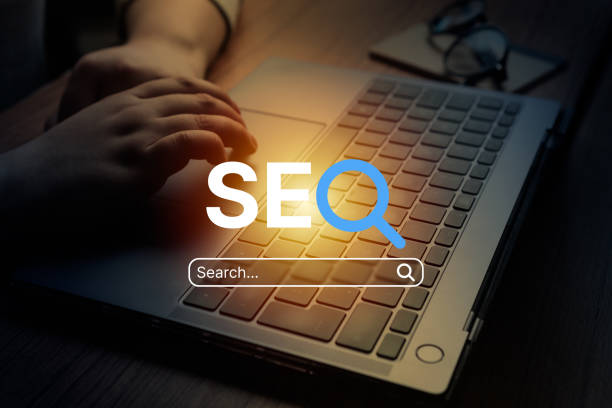
Titles and meta descriptions are the first things users see in search results.
Therefore, optimizing these elements to attract users and encourage them to click on your site’s link is very important.
Titles should be attractive, relevant to the content, and include the main keywords.
The length of titles should not exceed 60 characters, as Google shortens longer titles.
Meta descriptions should also provide a summary of the page’s content and encourage users to click on the link.
The length of meta descriptions should not exceed 160 characters.
Here is an example for optimizing title and meta description:
| Element | Poor Example | Good Example |
|---|---|---|
| Title | Blog | The Ultimate Guide to On-Page SEO | [Your Brand Name] |
| Meta Description | Our Blog Posts | In this article, you will learn about the principles of On-Page SEO and learn how to optimize your site for search engines. |
By optimizing titles and meta descriptions, you can increase your site’s click-through rate (CTR) in search results and attract more traffic to your site.
Optimizing and creating appropriate tags results in better On-Page SEO.
Also, this action helps to improve your site’s On-Page SEO.
Content Optimization; The King of On-Page SEO
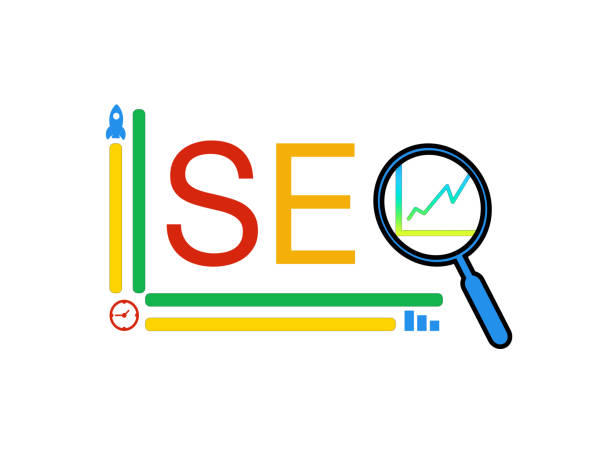
Content is king! This phrase is very famous in the SEO world and indicates the importance of content in ranking sites in search results.
High-quality, engaging, and relevant content to users’ needs can attract a lot of organic traffic to your site and improve your site’s ranking in search results.
To optimize content, you should pay attention to the following points:
- Keyword Research: Before writing content, research keywords related to your topic and use them naturally and relevantly in your content.
- Content Structure: Organize your content logically and structurally.
Use titles, subtitles, paragraphs, and lists to segment the content. - Readability: Write your content in simple and fluent language so that it is understandable for users.
Use short sentences and short paragraphs. - Images and Videos: Use relevant and high-quality images and videos in your content to increase the attractiveness of the content and keep users on your site longer.
- Update: Update your content regularly so that it is always new and relevant.
On-Page SEO is directly related to content optimization, because high-quality and relevant content increases your site’s ranking in search results.
Are you tired of your online store getting visitors but no sales? Rasaweb solves your main problem by designing professional online stores!
✅ Significantly increase sales with targeted design
✅ Perfect user experience for your customers
⚡ Get a free consultation!
Image Optimization; The Role of Images in On-Page SEO
![]()
Images play an important role in On-Page SEO.
Images can increase the attractiveness of content, keep users on your site longer, and help search engines better understand your site’s content.
To optimize images, you should pay attention to the following points:
- File Name: Choose file names for images with keywords related to the image.
For example, if you have an image of a laptop, name the file Laptop-computer.jpg. - Alt Tag: Fill the Alt tag of the images with accurate and relevant descriptions of the image.
The Alt tag helps search engines understand the content of the image. - File Size: Reduce the file size of the images as much as possible to increase the page loading speed.
You can use online image compression tools. - File Format: Use appropriate formats for images.
The JPEG format is suitable for images with many colors and the PNG format is suitable for images with few colors.
By optimizing images, you can increase page loading speed, improve user experience, and help search engines better understand your site’s content.
These actions help to improve your site’s On-Page SEO.
On-Page SEO with image optimization is an important step in improving your site’s ranking in search results.
URL Structure; Creating SEO-Friendly URLs
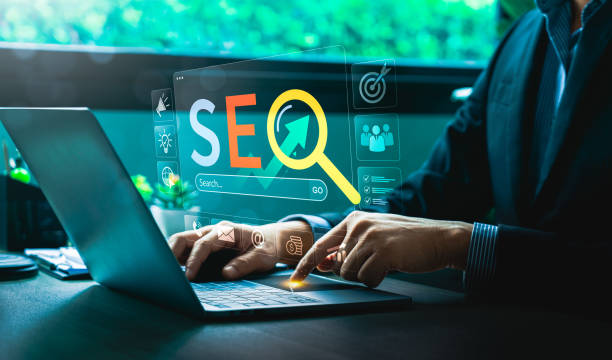
Your site’s URL structure plays an important role in On-Page SEO.
SEO-friendly URLs are URLs that are readable, relevant to the content, and include the main keywords.
To create SEO-friendly URLs, you should pay attention to the following points:
- Short and Readable: URLs should be short and readable so that users and search engines can easily understand them.
- Relevant to Content: URLs should be relevant to the page’s content and indicate what the page is about.
- Include Keywords: URLs should include the main keywords to help search engines better understand the page’s content.
- Using Hyphens: Use hyphens (-) to separate words in URLs.
- Lowercase Letters: Use lowercase letters in URLs.
For example, instead of using the following URL:
example.com/page?id=123
Use the following URL:
example.com/on-page-seo-comprehensive-guide
On-Page SEO with the creation of SEO-friendly URLs helps to improve your site’s ranking in search results.
Site Loading Speed; User Experience and SEO
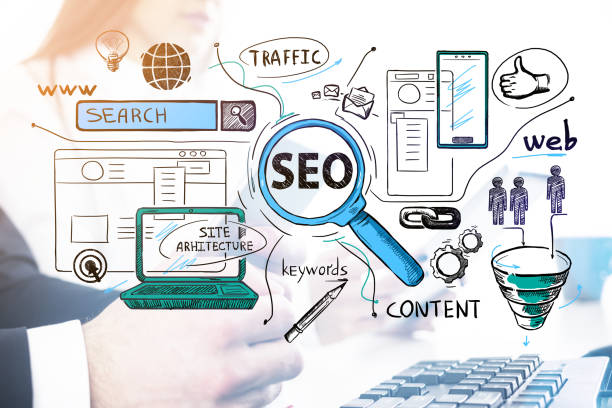
Site loading speed is one of the most important factors in On-Page SEO and user experience.
Users expect sites to load quickly.
If your site is slow, users will quickly leave your site and go to other sites.
This will reduce your site’s traffic, increase the bounce rate, and reduce your site’s ranking in search results.
To increase site loading speed, you can use the following solutions:
- Image Optimization: Reduce the file size of images as much as possible.
- Enable Compression: Use Gzip compression to reduce the size of HTML, CSS, and JavaScript files.
- Using CDN: Use a Content Delivery Network (CDN) to distribute your site’s content on different servers around the world.
- Code Optimization: Optimize your site’s HTML, CSS, and JavaScript code and remove unnecessary code.
- Using Cache: Use the cache system to store the site’s content in temporary memory to increase page loading speed.
On-Page SEO by increasing site loading speed helps to improve user experience and your site’s ranking in search results.
| Tool | Link | Description |
|---|---|---|
| Google PageSpeed Insights | PageSpeed Insights | A tool for checking site speed and providing improvement suggestions |
| GTmetrix | GTmetrix | A tool for checking site speed and providing a comprehensive report |
Internal Linking; Creating Connections Between Pages

Internal linking means creating links between different pages of your site.
Internal linking helps search engines better understand your site’s structure, identify more important pages, and show relevant content to users.
For internal linking, you should pay attention to the following points:
- Relevance: Links should be created between relevant pages.
- Link Text: The link text (Anchor Text) should be relevant to the content of the destination page.
- Number of Links: The number of internal links on each page should be balanced.
Avoid over-linking. - Important Pages: Give more links to the more important pages of your site.
On-Page SEO with internal linking helps to improve the site structure and your site’s ranking in search results.
Use appropriate internal links to strengthen your site’s On-Page SEO.
Are you tired of your online store getting visitors but no sales? Rasaweb solves your main problem by designing professional online stores!
✅ Significantly increase sales with targeted design
✅ Perfect user experience for your customers
⚡ Get a free consultation!
Site Responsiveness; Compatibility with Different Devices

Site responsiveness means the site’s compatibility with different devices such as mobile phones, tablets, and computers.
Today, most users access the internet through their mobile phones.
Therefore, site responsiveness is very important to provide a suitable user experience to these users and improve the site’s ranking in search results.
To make the site responsive, you can use the following solutions:
- Using Responsive Design: Use Responsive Design to create your site.
- Image Optimization: Optimize images for different devices.
- Test Site: Test your site on different devices to ensure its compatibility.
On-Page SEO with site responsiveness helps to improve user experience and your site’s ranking in search results.
Responsive website design is one of the very strong On-Page SEO techniques.
For more information about responsive design, you can visit the Wikipedia page.
The Role of Schema Markup in On-Page SEO

Schema Markup is code that is added to your website to help search engines better understand the content of your pages.
By using Schema Markup, you can provide more accurate information about your business, products, services, and other aspects of your website to search engines.
This information helps search engines to display richer and more attractive search results, which is called Rich Snippets.
Rich Snippets can include information such as star ratings, price, availability, and other information related to the page content.
Using Schema Markup can increase your site’s click-through rate (CTR) in search results and attract more traffic to your site.
On-Page SEO using Schema Markup helps to improve search engine understanding of site content and increase site traffic.
This On-Page SEO optimization helps search engines better understand website content and provide more accurate results to users.
Using these On-Page SEO techniques can help to improve your site’s ranking in search results and attract more traffic to your site.
Frequently Asked Questions
| Question | Answer |
|---|---|
| What is On-Page SEO? | On-page SEO involves optimizing elements that are directly in your control and within your website. Its goal is to help search engines better understand the content of the page and improve its ranking. |
| Why is On-Page SEO important? | On-Page SEO gives search engines clear signals about the content of the page, improves user experience, and increases the chances of attracting organic traffic. |
| What are the most important On-Page SEO factors? | Keywords, Title Tag, Meta Description, URL structure, high-quality content, image optimization, and internal links are among the most important factors. |
| What is the role of the Title Tag in On-Page SEO? | The title tag is one of the most important signals for search engines and users that specifies the main topic of the page. It must include the main keyword and be attractive. |
| How important is the Meta Description? | Meta descriptions do not directly affect ranking, but they can improve the click-through rate (CTR) by encouraging users to click. |
| How to optimize images for On-Page SEO? | By using a descriptive file name, appropriate Alt Text containing keywords, compression to reduce size, and correct dimensions. |
| What is the impact of Internal Links on SEO? | Internal links help search engines discover and index the pages of the site, distribute authority (PageRank) throughout the site, and improve user navigation. |
| Is page loading speed a factor in On-Page SEO? | Yes, page loading speed is a vital factor in On-Page SEO and user experience. Slower pages can lead to higher bounce rates and lower rankings. |
| What are the characteristics of quality content for On-Page SEO? | Quality content must be comprehensive, unique, relevant, reliable, readable, and fully answer users’ needs and questions. |
| How can keywords be used in content? | Keywords should be used naturally in the title, subtitles, first paragraph, body text, and image alt text. Avoid Keyword Stuffing. |
And other services of Rasa Web advertising agency in the field of advertising
Smart Marketing Automation: A new service to increase the click-through rate through attractive UI design.
Smart Website Development: A creative platform to improve user interaction with marketing automation.
Smart UI/UX: A creative platform to improve SEO ranking by customizing user experience.
Smart Conversion Rate Optimization: A creative platform to improve click-through rate using real data.
Smart Brand Identity: Transform customer acquisition by customizing the user experience.
And more than a hundred other services in the field of internet advertising, advertising consulting and organizational solutions
Internet Advertising | Advertising Strategy | Reportage Ad
Resources
On-Page Optimization at Moz
,On-Page SEO Guide at Ahrefs
,On-Page SEO: The Complete Guide at Search Engine Journal
,How to Optimize On-Page SEO: Neil Patel’s Ultimate Guide
? Are you ready to take your business to the top of the digital world? Rasaweb Afrin, a leading digital marketing agency, with expertise in search engine optimization (SEO), content marketing, and responsive website design, provides innovative and comprehensive solutions for your growth and visibility. We help you achieve your business goals and outpace your competitors with a strong and influential presence in the online space.
📍 Tehran, Mirdamad Street, next to the Central Bank, South Kazerun Alley, Ramin Alley No. 6
“`



